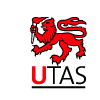Developing a Learning Plan
The learning plan should be developed through a partnership arrangement between the learner and the supervisor. Learning plans are personal documents that are customised to meet the specific learning needs of students. Although they are individualistic there is a similar sequence of steps that should be followed to develop a useful plan for learning. While each learning plan should have particular components it is how the student and clinical supervisor agree to work towards meetings those components of learning that will differ. A sample-learning plan is helpful to plan this process.
Learning Style Preference
In developing your learning plan, it may be useful if learners have a sense of their own learning styles. Understanding this will help plan learning and create a plan that will most effectively suit the needs of the individual.
Identify the learning needs
A learning need exists wherever there is a difference between where you are now and where you wish to be in terms of competence. Learning needs should be confined to one or two otherwise the contract will not be achievable.
Specify Evidence of Accomplishment
Each learning objective must be accompanied by a description of how its achievement will be evidenced. These may include reports of knowledge to the preceptor, or examples of utilisation of knowledge such as presentations.
Specify the learning objectives
Each learning need identified in step 1 is translated into a learning objective, which describes what will be learned rather than what will be done to achieve the learning.
Identify learning resources and strategies
Identify the resources [material and human] and the strategies [techniques], and the way in which you plan to use them to accomplish each objective.
Knowles, M. S. (1975). Self-directed learning: A guide for learners and teachers. New York: Cambridge Book Company.
Knowles, M. S. (1986). Using learning plans: Practical approaches to individualizing and structuring learning. San Francisco: Jossey-Bass.
McGarrell, H. M. (1996). Self-directed learning plans to individualize language learning in the classroom. Foreign Language Annals, 29, 495-508.
|




